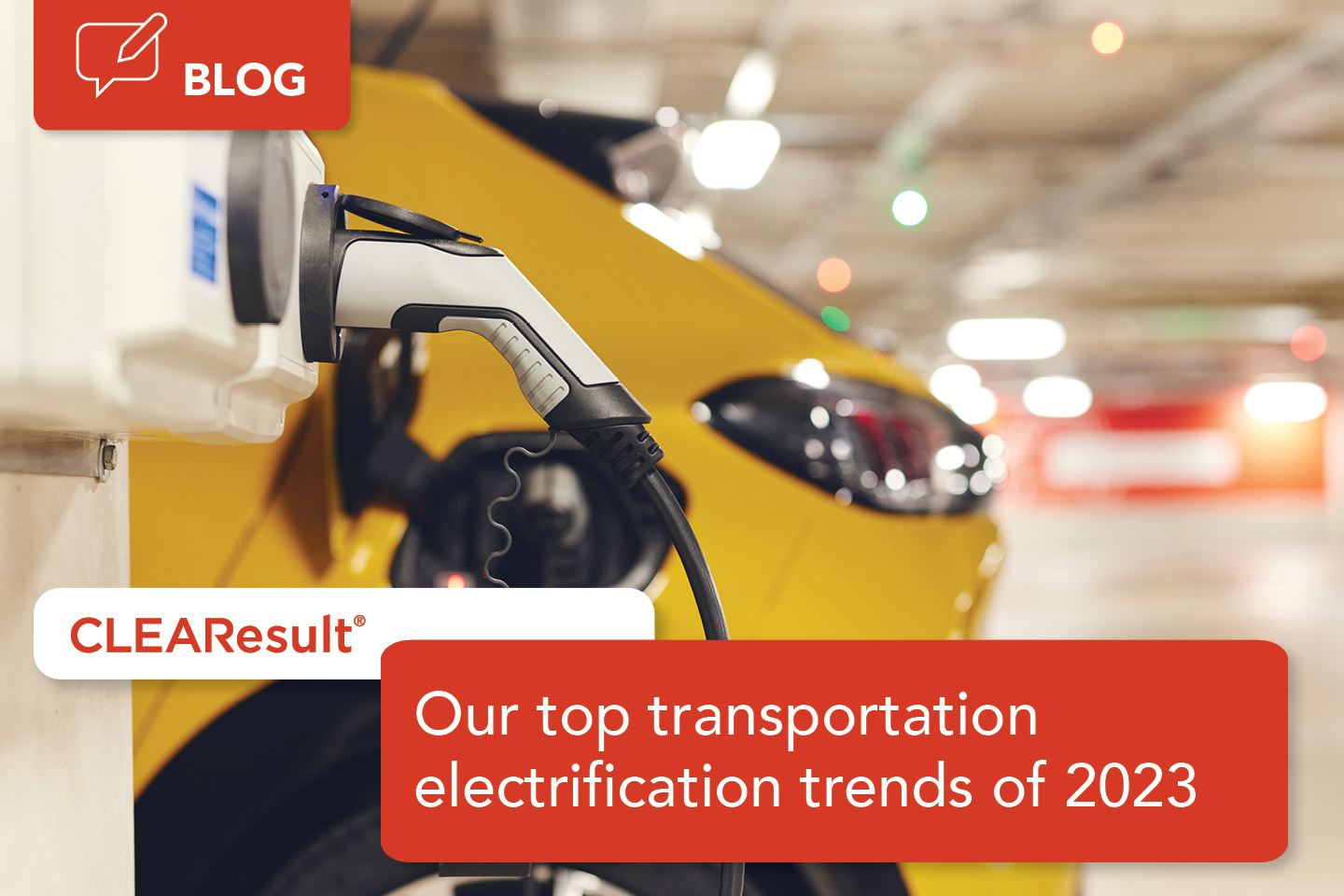Our top transportation electrification trends of 2023

As we wrap up 2023, we paused to take stock of the year’s notable achievements and milestones in transportation electrification (TE) industry. From the advancements in electric vehicle (EV) adoption to the deployment of fast chargers across the country, here are the highlights that utilities should be aware of as we step into 2024.
Milestone in EV sales in 2023
One million EV sales in 2023 is a major milestone for the industry. This year marked a historic milestone for the U.S. as it achieved one million in EV sales. In the third quarter of 2023, electric vehicles surpassed a 10 percent market share in the light-duty segment, marking an increased confidence in the EV market and its future potential.
The impact of the Inflation Reduction Act (IRA) was a contributing factor to the growth of EV sales which helped lower the price of both new and used EVs by thousands of dollars. Additional IRA provisions will support continued growth through incentives for domestic battery manufacturing.
The IRA also includes provisions for tax credits on EV purchases, leases, as well as tax credits for homeowners and businesses installing EV chargers in rural and disadvantaged communities. Customers will inevitably have questions about the IRA's complex eligibility requirements. This presents utilities with the opportunity to better educate their customers, ultimately building trust and forming stronger relationships as they explore EV adoption.
In 2023, the Environmental Protection Agency (EPA) advanced rulemaking for light and heavy-duty vehicle emission standards, aiming to elevate existing state-level zero-emission vehicle commitments to a national scale. All utilities now face the prospect of a rapidly electrifying market that will add load to their grids for decades to come.
With the federal government incentivizing both manufacturers and consumers to transition to EVs, utilities must be prepared to manage the impending impacts on the grid. This involves developing robust managed charging programs and strong education for customers on the implications of this transition.
Managed charging programs use smart chargers and vehicle telematics to minimize energy supply costs, address capacity constraints, and maximize emission reductions. Utilities armed with these programs and with an ongoing commitment to cultivating relationships with EV owners will be best equipped to handle the surging number of EVs integrating into the grid. Developing these ongoing relationships can be supported through offering rewards for off-peak charging and communicating the tangible benefits of at-home EV charging.
While households would typically have one or two EVs to charge, fleet owners are now poised to join the electric transition, drawn by the potential decrease in total ownership costs due to IRA grants and tax credits. Manufacturers are anticipating this shift and are expanding their electric fleet model availabilities, further increasing interest in fleet electrification. The impressive fleet show how electric trucks are feasible in an ever-expanding range of applications. As we discussed earlier this year in our fleet electrification webinar, utilities must begin planning for electric fleets and engaging customers to future-proof their investments.
Federal funds driving greater nationwide access to EV charging
As part of the Bipartisan Infrastructure Law (BIL) passed in 2021, the National Electric Vehicle Infrastructure (NEVI) Formula Program was established to provide funding to states for building a national network of EV chargers. In 2023, an initial wave of 26 states received funding and seven states have already awarded $101.5 million in funding to deploy fast charging stations along 79,000 miles of designated alternative fuel corridors.
Hawaii was first out of the gate, allocating its initial round of NEVI funding towards eight charging stations across two sites. A few days later, the Ohio Department of Transportation (ODOT) awarded over $18 million in NEVI funds for 27 EV fast charging stations along seven of Ohio’s interstate corridors.
As more and more states award their funding to sustainable energy implementers and developers, utilities play an important role in supporting project delivery. Utilities are investing in their distribution systems to meet new fast charging demands and, in some cases, helping co-fund projects. AES Ohio had the foresight to reserve funding in their Ohio charging program to support NEVI projects. AES Ohio is now engaging the NEVI awardees to support their installations.
This year, we saw NEVI funding allocation bring EV charging to the forefront at a time when access and reliability are concerns for potential buyers. It presents a fantastic opportunity for utilities to continue educating their customers about the growing investments in accessible and reliable EV charging and, if applicable, share how the utility is contributing to the EV charging solution.
The transition to transportation electrification is undeniably accelerating. Utilities must be prepared for the rapid influx of EVs joining the grid by developing robust managed charging programs, educating customers, and investing in infrastructure upgrades. The influx of federal funding through the NEVI program provides a significant opportunity to address charging reliability concerns and further accelerate the adoption of electric vehicles across the nation. Moving forward, collaboration between utilities, policymakers, and EV stakeholders will be crucial to ensure a smooth and successful transition to a clean energy future.
Stay tuned to CLEAResult Insights for more on how 2023 transformed our energy landscape.